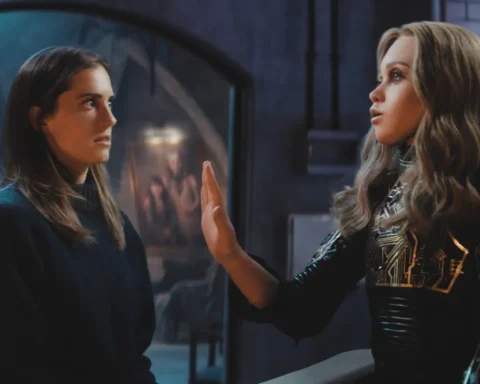Since its debut on Apple TV+ in November 2019, Servant has captivated audiences with its unique blend of psychological horror, mystery, and drama. Created by Tony Basgallop and executive produced by the renowned filmmaker M. Night Shyamalan, the series quickly became a standout offering on Apple’s streaming service. With its meticulously crafted storylines, eerie atmosphere, and strong performances, Servant has left an indelible mark on the horror genre. This article will explore the themes, production, writing, and cast that make Servant such a compelling and complex series.
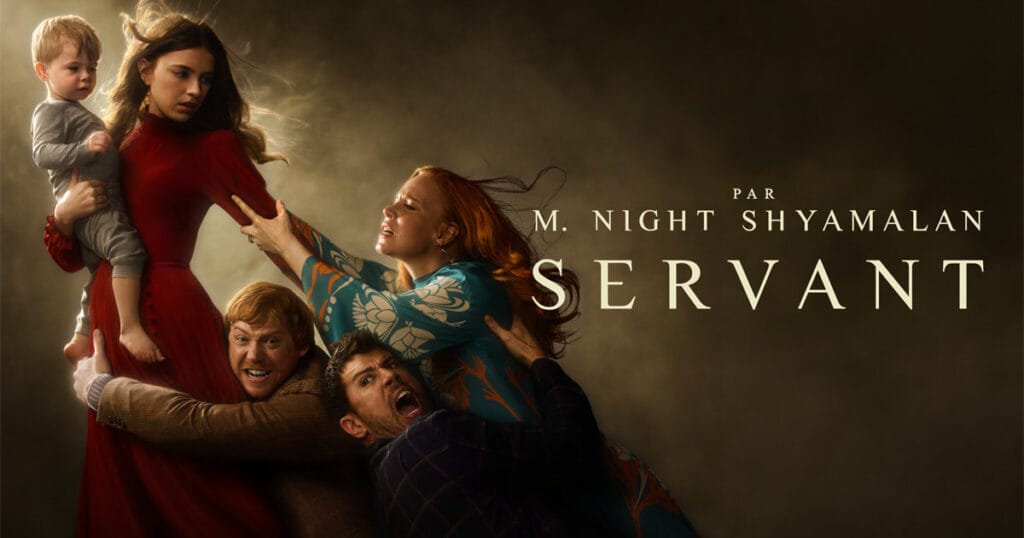
Plot Overview
Servant centers around a young couple, Dorothy (Lauren Ambrose) and Sean Turner (Toby Kebbell), living in an upscale brownstone in Philadelphia. The series begins with the couple hiring a mysterious nanny, Leanne Grayson (Nell Tiger Free), to care for their infant son, Jericho. However, it is soon revealed that Jericho is not a living baby but a hyper-realistic doll, a “reborn” used as a coping mechanism by Dorothy following the tragic death of their real child. Leanne’s arrival triggers a series of strange and unsettling events, unraveling secrets and testing the boundaries of reality and belief.
As the series progresses through its four seasons, the Turners’ world becomes increasingly surreal and nightmarish, with Leanne’s presence bringing an ambiguous mix of hope, dread, and supernatural occurrences. The show masterfully blends elements of horror, suspense, and dark humor, creating a narrative that keeps viewers on edge and constantly questioning the true nature of the characters and their reality.
Themes
At its core, Servant is a show about grief, guilt, and the psychological mechanisms people employ to cope with trauma. However, it also delves into themes of faith, control, and the nature of reality, exploring how these elements intersect and influence the characters’ lives.
1. Grief and Trauma
One of the most prominent themes in Servant is the exploration of grief and trauma, particularly through the character of Dorothy Turner. Dorothy’s inability to accept the death of her son Jericho is the driving force behind the series’ plot. The “reborn” doll represents her psychological denial, a fragile construct that allows her to continue living in a state of delusion. The show’s depiction of grief is both haunting and poignant, capturing the profound emptiness and desperation that can accompany such a loss.
Sean, on the other hand, represents a more pragmatic approach to grief. He is acutely aware of the reality of Jericho’s death and struggles with his own guilt and helplessness. His role as a chef, someone who creates and nurtures through food, contrasts with his inability to “fix” the situation with Dorothy. This dynamic between Dorothy and Sean highlights different responses to trauma and the strain it can place on relationships.

2. Faith and Belief
Faith and belief play a crucial role in Servant, both in a religious sense and in the broader context of belief in what is real or imagined. Leanne’s character embodies this theme, as her deeply religious background and mysterious abilities suggest a connection to the divine or supernatural. Throughout the series, viewers are left to ponder whether Leanne is a benign or malevolent force, and whether her powers are real or the result of psychological projection by the other characters.
The show also examines the power of belief in shaping reality. Dorothy’s belief in the doll as her real child is so strong that it affects everyone around her, drawing them into her delusion. The Turners’ household becomes a microcosm of how belief can warp reality, leading to the question of whether truth is objective or subjective, a theme that resonates deeply in the context of the show’s psychological horror.
3. Control and Power Dynamics
Control is another central theme in Servant, manifesting in various ways through the characters’ interactions. Dorothy’s need to control her environment and narrative is evident in her refusal to acknowledge Jericho’s death and her manipulation of those around her to maintain her constructed reality. Sean, meanwhile, struggles with his lack of control over the situation and his inability to help his wife.
Leanne’s arrival disrupts this balance of power. As the series progresses, it becomes clear that Leanne holds a unique power that challenges the Turners’ control over their lives and home. The shifting power dynamics between the characters create a constant sense of tension and unease, as each seeks to assert their will over the others, often with devastating consequences.
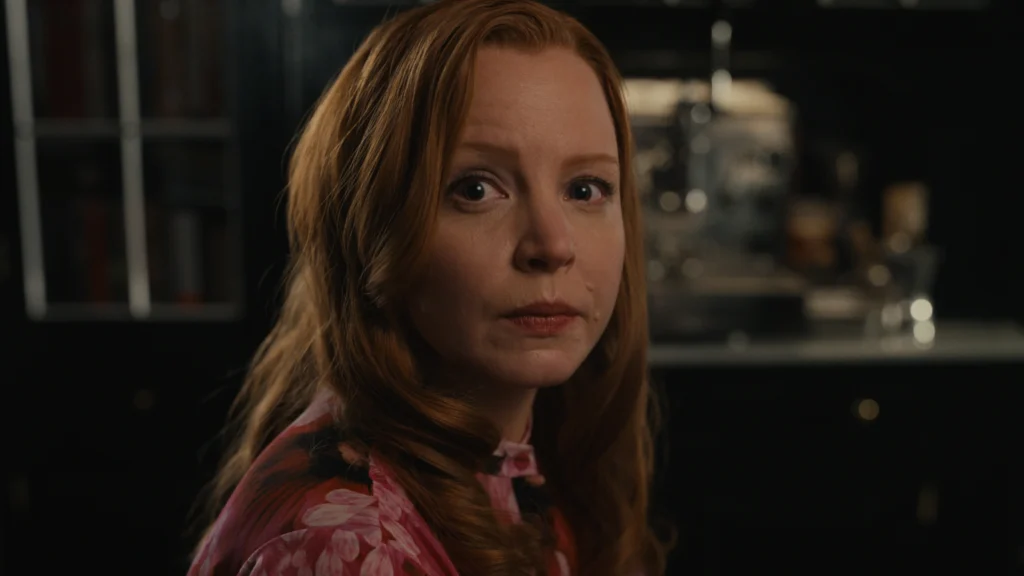
4. The Nature of Reality
The nature of reality is a pervasive theme in Servant, with the show frequently blurring the lines between what is real and what is imagined. The ambiguity surrounding Leanne’s powers, the true nature of the reborn doll, and the strange occurrences in the Turner household all contribute to a sense of disorientation and uncertainty. This theme is reflective of the psychological horror genre, where the boundaries between reality and fantasy are often fluid and unstable.
The show’s use of surreal and dreamlike imagery further enhances this theme, creating an atmosphere where viewers are never quite sure what is real. The characters’ perceptions of reality are constantly challenged, leading to a deeper exploration of the human mind and the ways in which it constructs and deconstructs reality in response to trauma and fear.
Production and Cinematic Style
Servant is notable not only for its compelling narrative but also for its distinctive production and cinematic style. M. Night Shyamalan’s influence is evident throughout the series, particularly in its use of visual storytelling, atmosphere, and suspense.
1. Visual Storytelling and Atmosphere
One of the most striking aspects of Servant is its visual style, which plays a crucial role in creating the show’s unsettling atmosphere. The series is predominantly set within the confines of the Turners’ brownstone, a decision that amplifies the sense of claustrophobia and isolation. The house itself becomes a character, with its dark, labyrinthine corridors and ornate, yet ominous decor contributing to the overall sense of dread.
Cinematographer Mike Gioulakis, known for his work on films like It Follows and Us, brings a meticulous eye to the series’ visual composition. The camera work in Servant is often tight and constrained, mirroring the characters’ emotional entrapment. The use of close-ups, particularly on faces and objects, creates an intimate but uncomfortable proximity to the characters, drawing viewers into their psychological turmoil.
Lighting also plays a significant role in establishing the show’s eerie mood. The series frequently employs natural light sources, such as candles and lamps, to cast long shadows and obscure details, enhancing the sense of mystery and foreboding. This use of chiaroscuro lighting, combined with the muted color palette, gives the series a timeless, almost Gothic quality, while also keeping the focus on the characters’ internal struggles.

2. Sound Design and Music
The sound design in Servant is another key element that contributes to its unsettling atmosphere. The series often uses silence or minimalistic soundscapes to create tension, with subtle audio cues, such as creaking floors or distant noises, adding to the sense of unease. This approach to sound design is reminiscent of Shyamalan’s previous work, where sound is used sparingly but effectively to heighten suspense.
The music, composed by Trevor Gureckis, complements the visual and auditory elements of the series. Gureckis’ score is haunting and minimalist, often relying on dissonant strings, piano, and electronic sounds to evoke a sense of dread. The music is used strategically, with moments of silence punctuated by sudden, jarring notes that reflect the psychological tension and unpredictability of the narrative.
3. M. Night Shyamalan’s Influence
As an executive producer and director of several episodes, M. Night Shyamalan’s influence on Servant is palpable. Known for his penchant for twist endings, psychological horror, and supernatural elements, Shyamalan’s signature style permeates the series. However, Servant also represents a departure from some of his previous work, as it delves deeper into psychological horror and slow-burn suspense rather than relying on plot twists.
Shyamalan’s involvement in the series brings a sense of cohesion to its overall tone and direction. His experience in crafting atmospheric horror is evident in the show’s pacing and tension-building, as well as in its thematic exploration of reality and belief. Shyamalan’s ability to blend the supernatural with the mundane is a perfect fit for Servant, where the line between the ordinary and the extraordinary is constantly blurred.

Writing and Storytelling
The writing in Servant is another key factor that sets the series apart from other horror shows. Tony Basgallop, the creator and head writer, has crafted a story that is both enigmatic and emotionally resonant, weaving together complex themes with a tightly controlled narrative structure.
1. Narrative Structure and Pacing
Servant is structured as a slow-burn narrative, with each episode unraveling just enough of the mystery to keep viewers engaged while leaving them with more questions than answers. The show’s pacing is deliberate, allowing for a deep exploration of the characters’ psychological states and the gradual build-up of tension. This approach to storytelling is characteristic of psychological horror, where the focus is on mood and atmosphere rather than on jump scares or overt horror elements.
The series is divided into four seasons, with each season exploring different facets of the central mystery and the characters’ relationships. The episodic format allows for a gradual escalation of suspense, as each installment peels back another layer of the characters’ psyches and the sinister forces at play. The use of cliffhangers at the end of episodes ensures that the tension remains high throughout the series, keeping viewers invested in the story.
2. Character Development and Dialogue
Character development is a strong point in Servant, with the writing team creating multi-dimensional characters whose actions and motivations are deeply influenced by their past experiences and traumas. Dorothy, Sean, and Leanne are all complex characters, each with their own secrets and psychological wounds that drive the narrative forward.
Dorothy’s character, in particular, is a fascinating study in denial and repression. Her outward appearance as a successful, composed news reporter contrasts sharply with her inner turmoil and fragility. The writing carefully balances Dorothy’s vulnerability with her often abrasive personality, making her a sympathetic yet flawed character.
Sean, as the more grounded and rational of the two, provides a counterbalance to Dorothy’s emotional volatility. His journey throughout the series involves grappling with his own guilt and helplessness, as well as his growing suspicion of Leanne and the strange events surrounding them.
Leanne is perhaps the most enigmatic character in the series. Her background is slowly revealed through flashbacks and cryptic dialogue, but much of her true nature remains shrouded in mystery. The writing team does an excellent job of maintaining this ambiguity, keeping viewers guessing about Leanne’s intentions and the source of her power.
The dialogue in Servant is sharp and often laden with subtext. Conversations between characters are frequently tinged with tension, as unspoken fears and suspicions simmer beneath the surface. The writing team skillfully uses dialogue to reveal character motivations and to build suspense, with each exchange adding to the overall sense of unease.
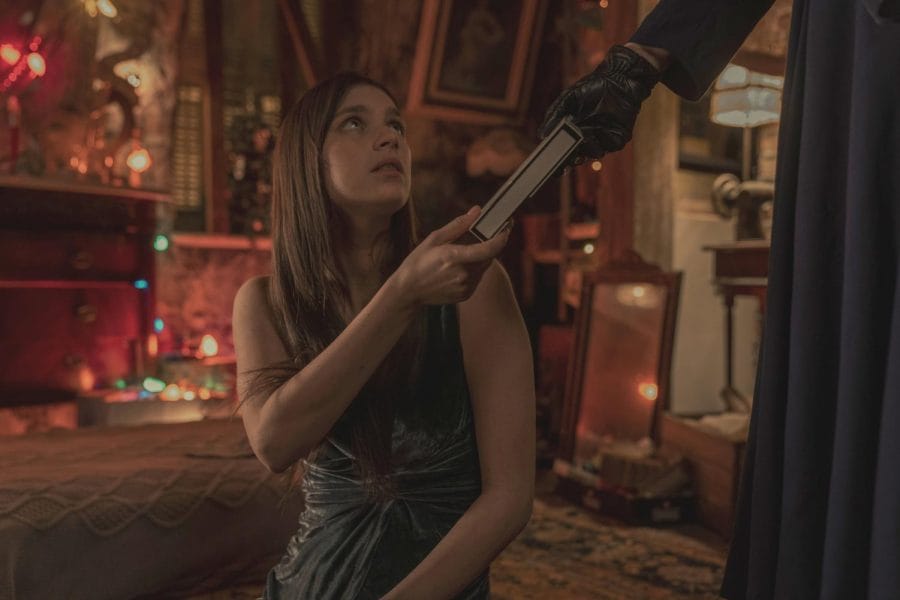
3. Symbolism and Metaphor
Servant is rich in symbolism and metaphor, with many of the show’s elements serving as representations of its central themes. The reborn doll, for example, is not just a stand-in for the deceased Jericho, but also a symbol of denial and the lengths to which people will go to avoid confronting painful truths. The doll’s presence is a constant reminder of the trauma that haunts the Turner household, and its role in the story is both literal and metaphorical.
Food and cooking, central to Sean’s character, also serve as symbolic elements in the series. Sean’s culinary creations often mirror the emotional states of the characters, with dishes that range from comforting to grotesque. The act of cooking becomes a metaphor for control, creation, and destruction, reflecting Sean’s internal struggle as he tries to hold his family together.
The house itself, as mentioned earlier, is a symbolic space, representing both a sanctuary and a prison. Its dark, maze-like interiors and the secrets hidden within its walls mirror the psychological labyrinths that the characters must navigate. The house’s design, with its many doors and locked rooms, also serves as a metaphor for the barriers between truth and illusion, as well as the characters’ attempts to compartmentalize their trauma.
Cast and Performances
The success of Servant owes much to its talented cast, whose performances bring depth and authenticity to the complex characters they portray. The small ensemble cast allows for a focus on character-driven storytelling, with each actor delivering a nuanced performance that enhances the show’s psychological intensity.
1. Lauren Ambrose as Dorothy Turner
Lauren Ambrose delivers a standout performance as Dorothy Turner, capturing the character’s duality with remarkable skill. Ambrose brings both vulnerability and strength to Dorothy, portraying her as a woman teetering on the edge of sanity. Her ability to shift between moments of warmth and tenderness to those of icy detachment or manic desperation is a testament to her range as an actress.
Dorothy’s descent into denial and her refusal to face the truth about Jericho’s death are portrayed with heartbreaking realism by Ambrose. Her performance makes Dorothy a sympathetic figure despite her often erratic behavior, and she effectively conveys the deep pain and unresolved grief that drive Dorothy’s actions throughout the series.

2. Toby Kebbell as Sean Turner
Toby Kebbell’s portrayal of Sean Turner is equally compelling, providing a grounded counterpoint to Dorothy’s emotional volatility. Kebbell brings a quiet intensity to the role, capturing Sean’s internal struggle as he tries to support his wife while grappling with his own doubts and fears. His performance is subtle yet powerful, conveying a deep sense of love and guilt that underpins Sean’s character.
Kebbell’s ability to convey complex emotions through minimal dialogue is particularly noteworthy. His interactions with Ambrose and Free are charged with tension, as Sean attempts to navigate the increasingly surreal and dangerous situation in his home. Kebbell’s portrayal of Sean’s growing unease and suspicion is a key element in building the show’s suspense.
3. Nell Tiger Free as Leanne Grayson
Nell Tiger Free’s performance as Leanne Grayson is one of the most enigmatic aspects of Servant. Leanne is a character shrouded in mystery, and Free’s portrayal captures this ambiguity with a mix of innocence and quiet menace. Her performance keeps viewers guessing about Leanne’s true nature, as she shifts between moments of vulnerability and instances of eerie detachment.
Free’s portrayal of Leanne’s religious fervor and her complicated relationship with the Turners adds depth to the character. She effectively conveys the sense that Leanne is both a victim and a potential threat, making her one of the most intriguing characters in the series. Free’s ability to maintain this balance of ambiguity is crucial to the show’s tension and mystery.

4. Rupert Grint as Julian Pearce
Rupert Grint, best known for his role as Ron Weasley in the Harry Potter series, delivers a surprising and effective performance as Julian Pearce, Dorothy’s brother. Julian is a cynical, hard-drinking character who initially serves as comic relief, but Grint gradually reveals layers of complexity beneath Julian’s sardonic exterior.
Grint’s portrayal of Julian’s growing paranoia and his protective instincts toward his sister adds another dimension to the character. Julian’s skepticism and his attempts to uncover the truth about Leanne create additional tension within the story. Grint’s performance demonstrates his versatility as an actor, as he navigates both the darkly comedic and dramatic aspects of Julian’s character.
Critical Reception and Impact
Servant has received generally positive reviews from critics, who have praised its atmospheric direction, strong performances, and unique blend of psychological horror and drama. The show has been noted for its slow-burn approach to storytelling, which has divided some viewers but has been appreciated by others for its depth and complexity.
1. Critical Reception
Critics have lauded Servant for its originality and its ability to maintain suspense throughout its run. The series’ focus on psychological horror, rather than relying on traditional horror tropes, has been highlighted as one of its strengths. The performances of the cast, particularly Lauren Ambrose and Nell Tiger Free, have been singled out for praise, with many reviewers noting their ability to bring emotional depth to the story.
The show’s visual style and production design have also been widely praised, with the Turners’ brownstone being described as a perfect setting for the show’s claustrophobic atmosphere. M. Night Shyamalan’s influence as executive producer has been seen as a positive force, contributing to the show’s cohesive tone and its blend of supernatural and psychological elements.
However, some critics have noted that the show’s slow pacing and ambiguous storytelling may not appeal to all viewers. The deliberate withholding of information and the gradual unraveling of the plot have been both praised for creating suspense and criticized for being frustratingly opaque. Despite these differing opinions, Servant has maintained a dedicated fanbase and has been regarded as one of Apple TV+’s most intriguing offerings.

2. Audience Reception and Cultural Impact
Servant has garnered a loyal following, particularly among fans of psychological horror and M. Night Shyamalan’s work. The show’s complex characters, eerie atmosphere, and the central mystery have sparked much discussion and theorizing among viewers, contributing to its popularity.
The series has also been noted for its exploration of themes such as grief, trauma, and the nature of reality, which have resonated with audiences on a deeper level. Servant has been compared to other psychological horror series, such as Bates Motel and The Haunting of Hill House, for its ability to combine horror with character-driven drama.
While Servant may not have reached the mainstream success of some other Apple TV+ series, it has carved out a niche for itself as a thought-provoking and unsettling show that challenges viewers to question their perceptions of reality and the human psyche.
Conclusion
Servant stands out as a unique and compelling entry in the psychological horror genre. With its complex characters, rich thematic exploration, and distinctive cinematic style, the series has left a lasting impact on viewers and critics alike. The show’s ability to blend supernatural elements with deep psychological drama has made it a standout offering on Apple TV+, and its exploration of themes such as grief, belief, and the nature of reality has resonated with audiences on multiple levels.
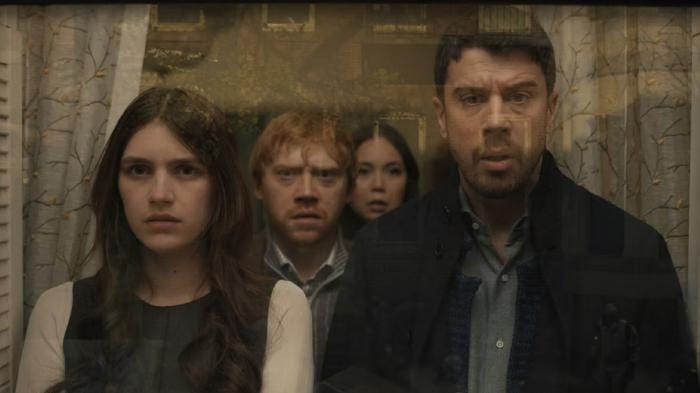
As the series concludes its four-season run, Servant leaves behind a legacy of thought-provoking storytelling and masterful suspense. Its exploration of the human condition through the lens of horror has made it a memorable and influential series, one that will continue to be analyzed and appreciated by fans of the genre for years to come.


